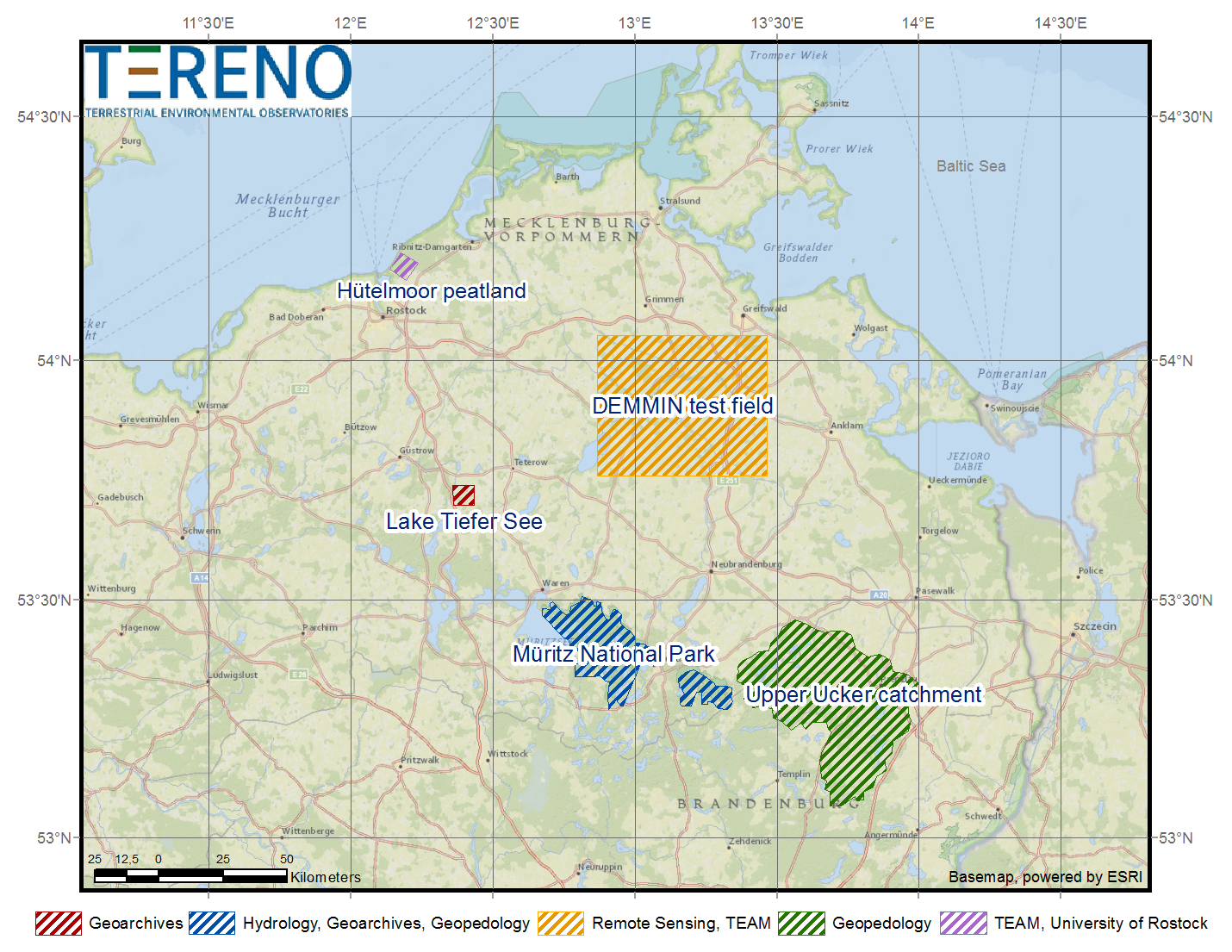Northeast German Lowland Observatory
The Northeast German Lowland Observatory is situated in a region shaped by recurring glacial and periglacial processes since at least half a million years. Within this period, three major glaciations covered the entire region, the last time this happened approximately 25 – 15 ka ago (Weichselian glaciation). Since that time, a young morainic landscape developed characterized by many lakes and river systems that are connected to the shallow ground water table.

The main land-use types are arable, pasture, planted pine forests, deciduous forests, and wetlands of high ecological value. The present climate is characterized by rather low annual precipitation between 550 and 650 mm/a. Particularly, this rather low annual precipitation in combination with major reconfigurations of the hydrological system (damming and drainage) in historic times makes this region highly sensitive with regard to climate change impacts. The Northeastern Lowland Observatory provides unique natural laboratories to investigate relatively young land surfaces starting at the “zero-point” of landscape evolution. Within the TERENO concept the sensitivity to climate change of these young landscapes can be compared with that of older landscapes that have not been affected by glaciers.




.jpg)






.jpg)
